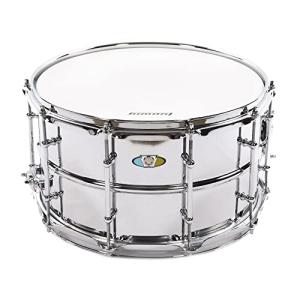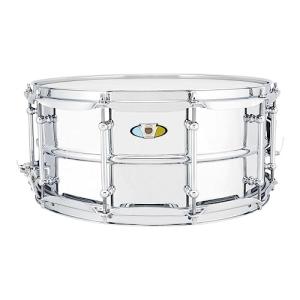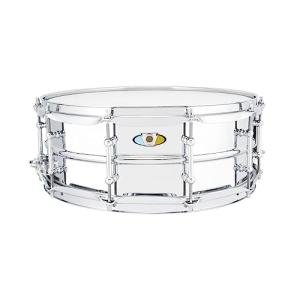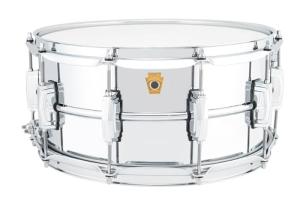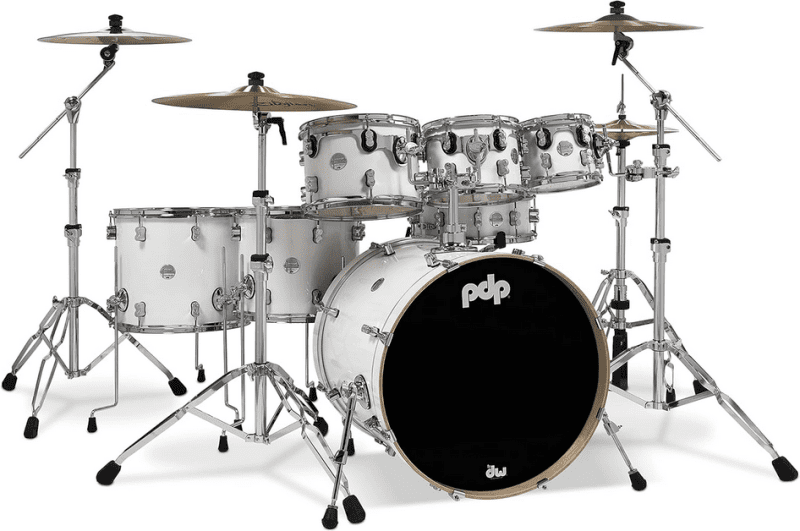Learning drums starts with the basics, and drum rudiments are at the core of that. These simple patterns lay down the foundation for just about every drumming style.
Knowing the five essential drum rudiments for beginners gives you a solid base to grow your skills and confidence behind the kit.

Each rudiment has its job in helping you build control, speed, and timing. When I focused on these patterns, my drumming became more versatile quickly.
Practicing these regularly transforms simple beats into something way more dynamic. If you get comfortable with the basics, picking up advanced patterns later feels a lot less intimidating.
I’d say start slow, really focus on accuracy, and only then bump up your speed. That way, you build muscle memory without picking up bad habits.
Key Takeaways
- Mastering key rudiments builds a strong drumming foundation.
- Practicing basic patterns improves control and timing.
- Steady practice helps develop speed and technique.
Understanding Drum Rudiments
Drum rudiments are the foundation of drumming. They shape how I control my sticks, timing, and rhythm.
Knowing what rudiments are, why they matter, which types I use, and how they actually make me better is key if you want to level up as a drummer.
What Are Drum Rudiments?
Drum rudiments are simple patterns you play on the drum, usually on the snare. These are the basic building blocks for all drumming.
They include strokes like single hits, rolls, flams, and drags. The Percussive Arts Society has a standard list of 40 essential rudiments that most drummers work from.
Practicing these helps me get better at control, speed, and coordination. It’s kind of like learning the alphabet before you write words—without them, playing songs or solos feels impossible.
Importance for Drummers
Rudiments matter because they sharpen my technique and timing. They teach my hands and fingers to move in ways that prevent injury and make my playing smoother.
Most drummers focus on these standard rudiments to build a strong base. They help with sticking patterns and work across all sorts of musical styles.
Plus, once you know them, you can talk shop with other drummers—rudiments are like a common language.
Types of Drum Rudiments
Many drum rudiments exist, but beginners should start with a few essentials. The main types include:
- Single Stroke Roll: Alternating hits between hands.
- Buzz Roll: Multiple bounces on one hand.
- Five-Stroke Roll: A quick group of five hits.
- Flam: A soft hit followed by a louder hit.
- Drag: Two soft hits before a louder note.
These standard rudiments cover a wide range of skills. They’re all part of the 40 official rudiments recognized by the Percussive Arts Society.
Practicing each one helps me build better control and timing.
How Rudiments Build Drumming Skills
I notice my muscle memory and hand independence improve when I practice rudiments regularly. I learn to control all sorts of strokes and pick up speed.
Rudiments teach me to keep a steady rhythm on the snare, a must for any drummer. Mastering them lets me create more interesting beats and fills in songs.
My transitions between strokes get smoother, and my playing becomes more versatile. Rudiments are the backbone of solid drumming technique—I use them every time I play.
The 5 Essential Drum Rudiments for Beginners
Getting the hang of basic drum rudiments gives you a strong platform for playing. These five rudiments really help with control, speed, and timing.
Each one focuses on different hand movements and patterns that show up in tons of drum beats.
Single Stroke Roll
The single stroke roll is the simplest roll rudiment out there. You just hit the drum with alternating hands: right, left, right, left, etc.
This one teaches hand independence and control. If you practice it slowly, you’ll develop even strokes.
Start by playing each stroke at a slow pace, keeping the volume and timing consistent. As you get more comfortable, pick up the speed but don’t lose control.
The single-stroke roll is at the core of many advanced techniques and appears in all sorts of music.
Double Stroke Roll
The double stroke roll involves playing two hits with each hand before switching: right-right and left-left. This rudiment is great for building endurance and helps you play fast, smooth rolls without tiring out.
When you practice, aim to make both hits sound even and connected. Start slowly, then gradually speed up, ensuring the strokes stay clean.
The double stroke roll is huge for drum fills and adds texture to your playing.
Paradiddle
The paradiddle mixes singles and doubles. The basic pattern: right-left-right-right, then left-right-left-left.
Practicing paradiddles improves hand coordination and prepares you for more complex rhythms. It’s also great for developing speed and control.
I’d suggest practicing paradiddles slowly with a metronome to keep your beat steady. They’re also a stepping stone to more advanced diddle rudiments.
Flam
A flam is when you hit the drum with one hand just before the other, making a quick grace note before the main beat. It adds emphasis and makes your sound fuller.
Hold one stick a little higher to practice and hit it just before the other. Focus on your timing so the two notes almost blend into one.
Flams appear in many drum patterns and help you add personality and expression to your playing.
Drag
Drags, or drag rudiments, are played by quickly hitting two grace notes before a main stroke. The usual drag pattern is two soft hits followed by a louder one, usually with the same hand.
Drags help you control soft and fast notes and add a roll-like texture. Start slow to make the grace notes clear and even.
They’re especially useful for creating accents and dynamic effects in fills.
| Rudiment | Pattern Example | Main Benefit |
|---|---|---|
| Single Stroke Roll | R L R L R L | Hand independence, speed |
| Double Stroke Roll | R R L L R R L L | Smooth rolls, endurance |
| Paradiddle | R L R R L R L L | Coordination, rhythm variety |
| Flam | (soft-left) R or (soft-right) L | Accent, fuller sound |
| Drag | soft-soft-loud stroke | Control over grace notes |
Mastering Technique and Practice Methods
I focus on the key skills that build a solid drumming base. This means learning the right hand position, controlling your sticks smoothly, practicing simple sticking patterns, and using a metronome to nail your timing.
Each part helps with coordination, muscle memory, and dynamic control. It’s a lot to juggle at first, but it pays off.
Proper Hand Technique
I start by holding the drumsticks correctly so I don’t build up tension and can control the sticks better. My grip is firm but relaxed—usually matched grip, so both hands hold the sticks the same way.
I try to let my fingers and wrists do the work, not just my arms, to keep strokes smooth. Good hand technique means less fatigue and faster, cleaner strokes.
I pay attention to my thumb and index finger wrapping around the stick ,and let the stick bounce naturally. This helps with rebound and dynamic control, making playing soft and loud notes easier.
Checking my posture helps too—I want my wrists aligned so I don’t strain anything.
Building Stick Control
Stick control is about moving the sticks precisely and quickly. I practice simple exercises that focus on controlling the speed and force of each hit, so my sound stays consistent whether I’m playing soft ghost notes or strong accents.
I use routines that repeat single strokes, double strokes, and rolls—starting slow, and picking up speed as I get more comfortable.
Controlling the rebound is a big deal, so I work on letting the sticks bounce instead of forcing every stroke down. It feels awkward at first, but it makes a big difference.
Sticking Patterns for Beginners
I begin with basic sticking patterns like single-stroke roll, double-stroke roll, paradiddle, flam, and drag. These rudiments are the building blocks for trickier rhythms.
I work on each pattern slowly, keeping my hands even and strokes consistent. Repeating these patterns builds coordination and helps me keep a steady rhythm.
It's key to switch smoothly between sticks and repeat patterns until my hands remember them. I like using short practice bursts to stay motivated.
Using a Metronome for Timing
The metronome is my go-to tool for developing timing and rhythm. I start with rudiments at a slow, comfortable tempo, ensuring every stroke lines up with the click.
As I get better, I bump up the speed. This helps me avoid rushing or dragging the beat and trains my internal clock so I can keep time even without the metronome.
Setting small goals—like staying consistent for 30 seconds before speeding up—keeps me on track and boosts my confidence. It’s not flashy, but it works.
Practical Application and Progression
Building skills with drum rudiments isn’t just about repeating patterns. I like to take those techniques and actually use them when I’m drumming for real.
I focus on bringing rudiments to the drum set, creating creative fills and grooves, and building a practice routine that works for me. Tracking progress helps me figure out what to learn next, though honestly, sometimes I just go with what feels interesting.
Applying Rudiments to Drum Set
When I first moved from practicing rudiments to the actual kit, I started by playing them across different drums. Single stroke rolls on the snare add some texture and help me work on control.
Double stroke rolls? If I play them softly on toms or cymbals, they turn into these smooth, buzzy sounds that I love. Swapping limbs—using hands and feet on different drums pushes my limb independence and makes me more comfortable with complex rhythms.
I always start slow, paying attention to clean hits and even timing. I pick up the speed only when it feels solid.
Sometimes I’ll sneak rudiments into grooves, fitting them into patterns on the kick, hi-hat, or ride. That way, rudiments stop feeling like boring drills and become part of my drumming style.
Creating Drum Fills and Grooves
When I mix rudiments into my playing, fills and grooves flow better. Paradiddles and 5-stroke rolls help me move smoothly between drums and play with dynamics.
I try to connect rudiment phrases so they don’t sound choppy—like, a paradiddle can move from snare to toms and set up a groove, or just add a bit of spice between bars.
Grooves feel tighter when I sneak in rudimental touches under the hi-hat or snare. It adds complexity but doesn’t mess with the groove’s feel. I’m careful not to overdo fills, though—I want them to fit the song, not just show off.
Developing a Practice Routine
Having a solid practice routine makes all the difference. I usually kick things off with a slow warm-up, running through rudiments on a practice pad or snare.
Then I pick a few rudiments to focus on, trying to get faster, more even, and more controlled. I work both hands and feet, sometimes together, sometimes alone. The metronome keeps me honest—even if I don’t always love it.
Setting small goals for each session helps, like learning a new rudiment or getting into a groove. I keep sessions short and take breaks since that works better for me than marathon practices.
Daily practice, even if it’s just a little, really adds up. Consistency wins out over long, unfocused sessions every time.
Tracking Your Progress and Next Steps
When I want to track my progress, I record my practice sessions or jot down notes about what’s working and still giving me trouble. It’s the only way I can see if I’m getting faster, more in control, or better at using those rudiments on the drum set.
I tweak my practice plan based on what I notice. If one rudiment keeps tripping me up, I’ll spend extra time on it—no shame.
After I learn the basics, I experiment with more complex rudiments or mix them up for advanced fills. Sometimes, it’s a mess, but that’s the point.
Jumping into drum lessons or workshops brings me fresh ideas and keeps things interesting. I’m always looking for new challenges to keep myself moving forward—even if it means getting a little frustrated now and then.
Pacific by DW Concept Maple Exotic 5-Piece Shell Pack
Experience the magnificent sound and craftsmanship of the Pacific by DW Concept Maple Exotic 5-Piece Shell Pack available at our ecommerce store
Product information
$1,299.99
Product Review Score
4.17 out of 5 stars
216 reviewsProduct links
DISCLAIMER
This document is provided for general information purposes only and should not be relied upon as providing legal advice, technical, or specific operational guidance to the reader, whether as to the practices described in the document or the applicable legal requirements and regulations. Percussion Pros. Com expressly disclaims any responsibility for liability arising from or related to the use or misuse of any information in this document.



